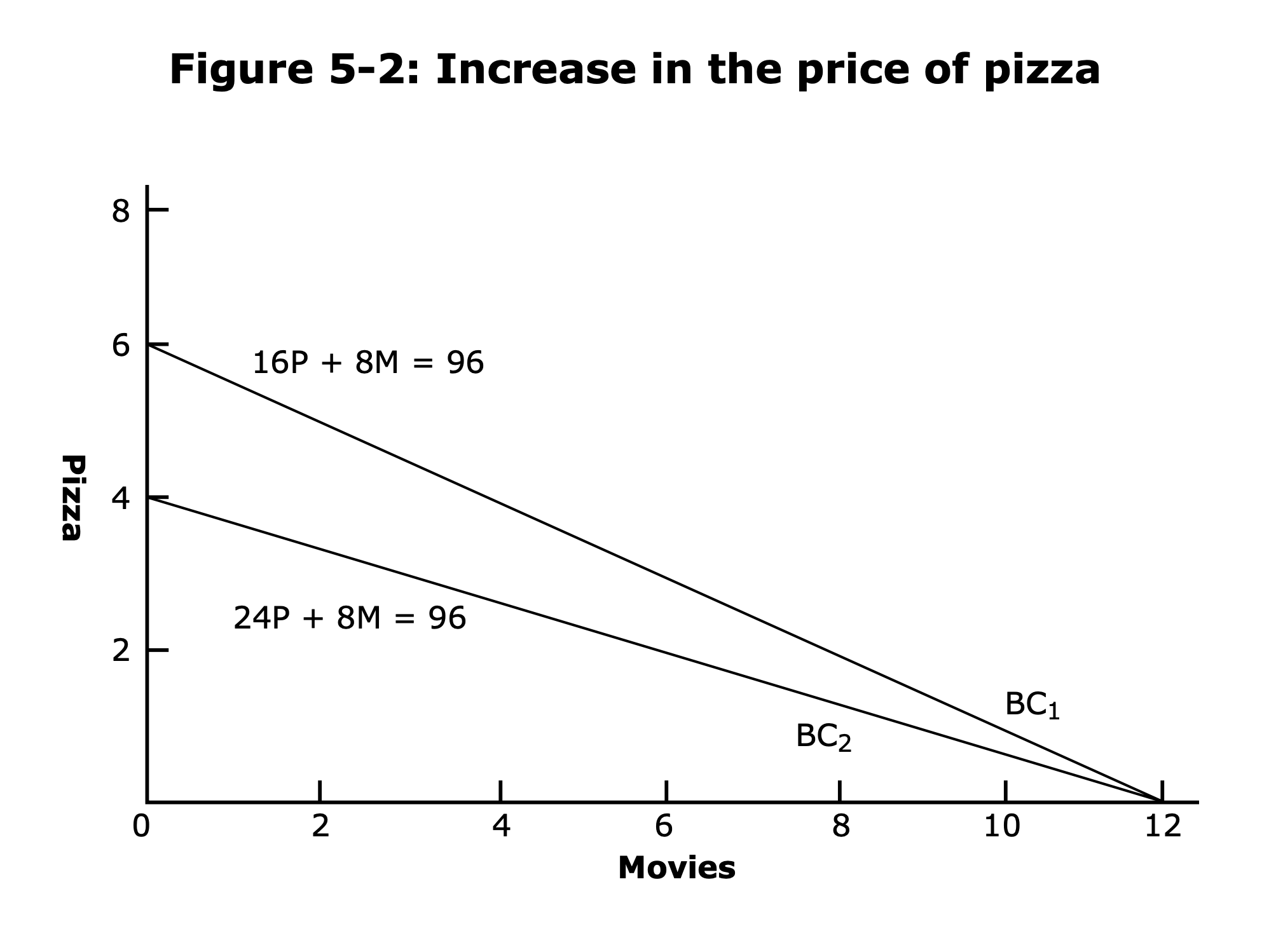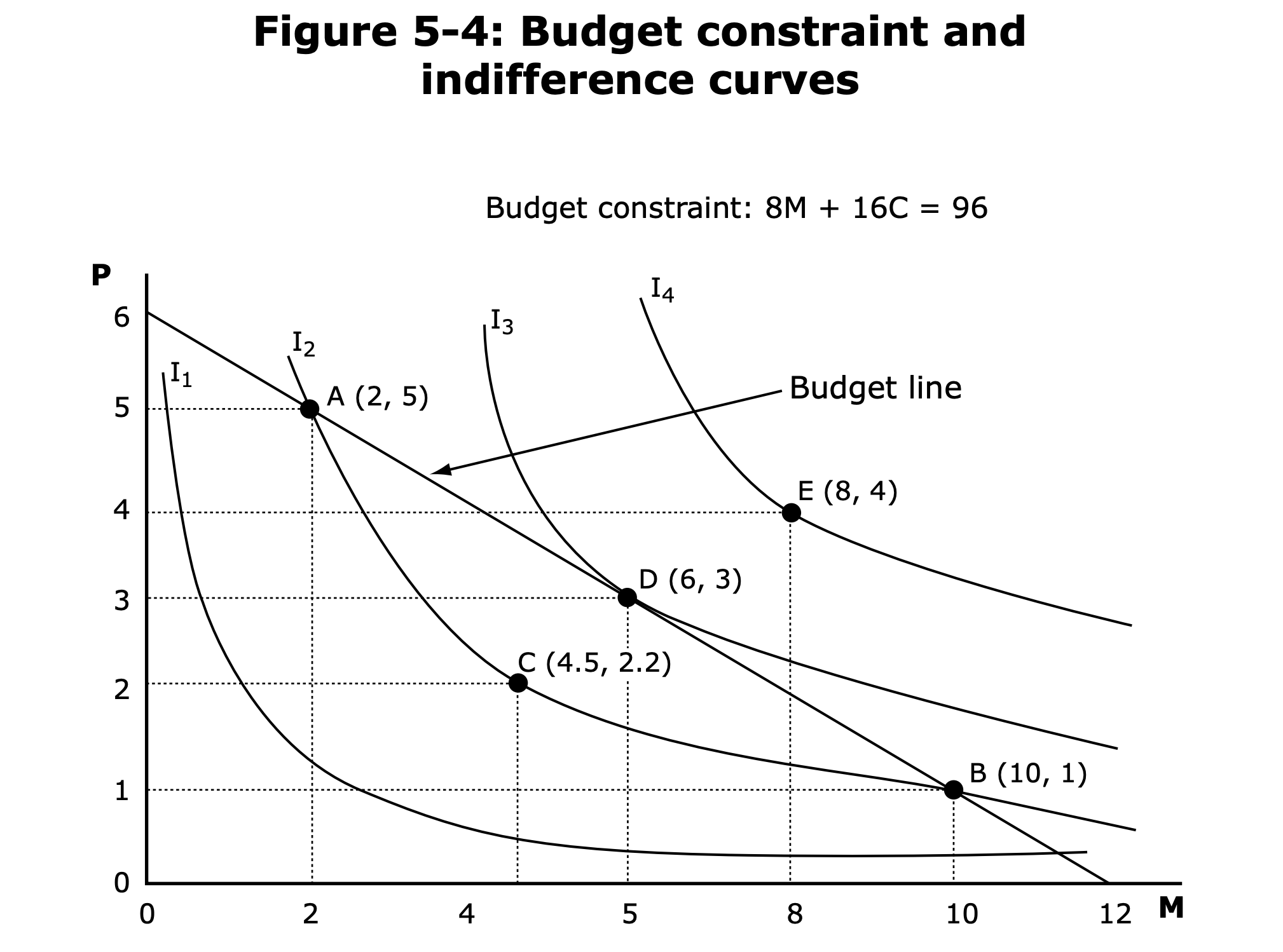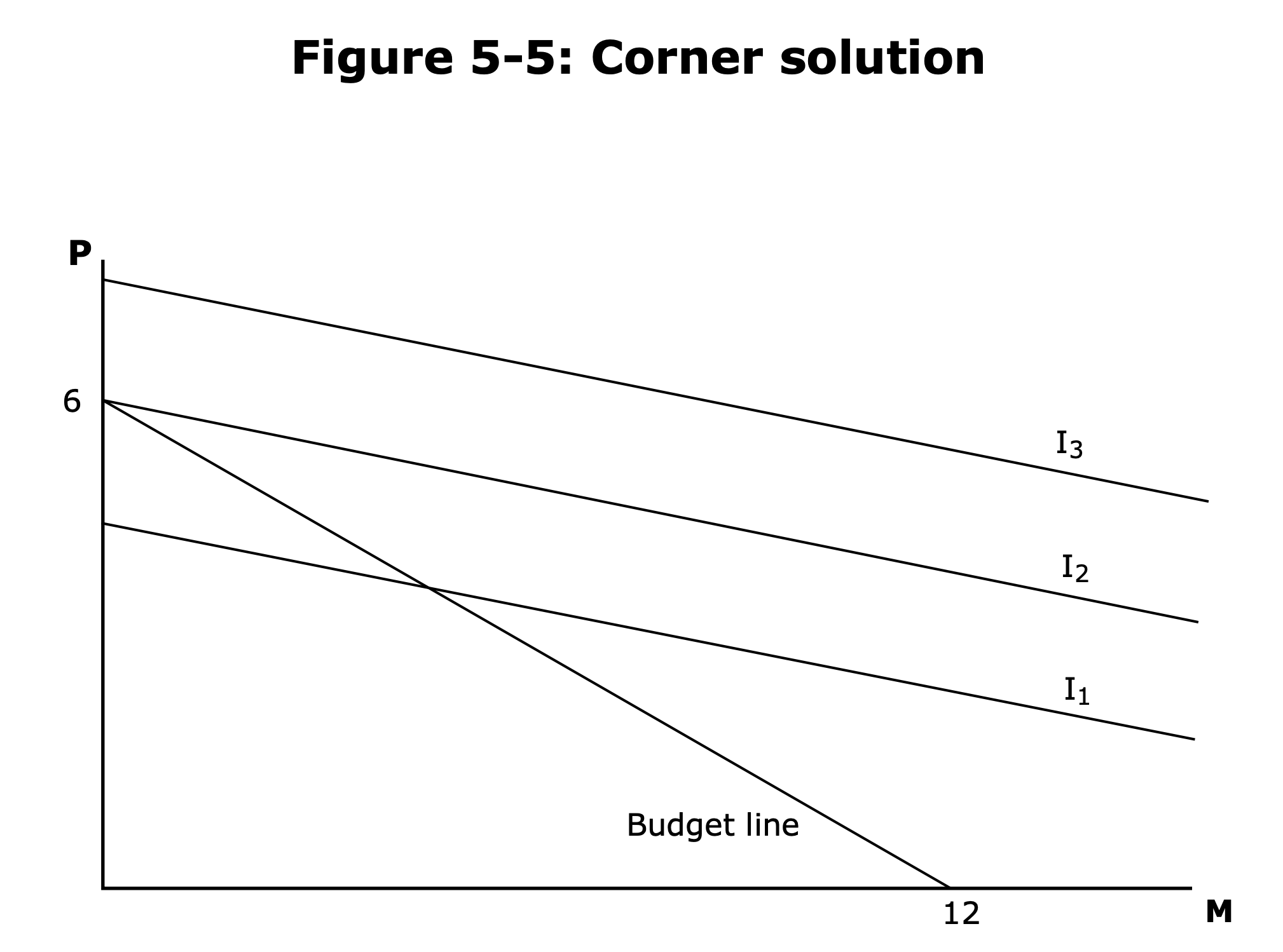Lecture 5
2023-04-01
MIT OCW 14.01SC L5 - Budget Constraints
MIT OCW 14.01SC - Lec 5 (Youtube)
- Assuming for now (till 3rd lecture from the end) that income = budget. (No savings.)
- Good enough assumption for typical Americans.
- Assume income
ygiven to us at the starting which we have to spend on pizza and movies. y = Price_m * No of Movies + Price_p * No of Pizzas(y = Sum (P_i * X_i))- Straight Line on the Pizza - Movie Graph (Budget Line)

- Slope of the line will be (-ve of price ratio) (
-P_m/P_p) - This slope is called Marginal Rate of Transformation
- Slope of the line will be (-ve of price ratio) (
- Opportunity Cost
- Oppertunity cost is the value of the forgone alternative.
- E.g. A movie is costing us half a pizza. (In the example in the graph, BC_1)
- Maximising Utility subject to Budget Constraint

- Maximising Utility is equivalent to choosing furthest out indifference curve on the budget line.
- Indifference curve will be tangent to the budget constraint!
- The slope of the indifference curve = slope of the budget constraint!
- Marginal rate of substitution = Marginal rate of transformation!
- (∂U/∂x_1) / (∂U/∂x_2) = - P_1 / P_2- This equation is basically saying
(Marginal) Benefit = (Marginal) Costs(Of next pizza vs movie, etc.) (∂U/∂x_1)/P_1 = (∂U/∂x_2)/P_2- Benefit of Next dollar on pizza expenditure = Benefit of Next dollar on movie expenditure
- If that is not true, (let's say next dollar on pizza expenditure buys us more utility) then we can shift our optimum point towards pizza!
- Corner solutions possible where the slopes will not be equal!

- Mental accounting
- We solved the above case for only 2 things but in practice we may have more choices -> multidimensional graph
- Or we can divide things into pairs!
- Could divide budget into categories and solve for each category.
- Govt policy:
- If they wanted to lower pizza consumption (pizza causes obesity or whatever), they could tax pizza.
- Higher price of pizza, flatter budget constraint line -> shifted optimal point, lower consumption of pizza.
- They could also do something different, like change the way people think about pizza.
- Think of pizza as entertainment, not food. -> Maybe people allocate less to entertainment -> Leads to lower consumption of pizza.
- Called a Nudge in Behavioural Economics.